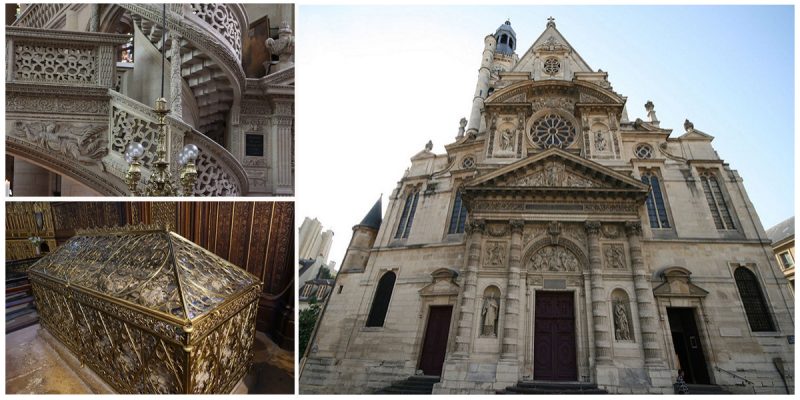Saint-Étienne-du-Mont is located on the Montagne Sainte-Geneviève, a few steps from the Panthéon in Paris. It is one of the most unusual churches in the city which was built on a spot that has a long history which dates back to 6th-century.
The church was built between 1492 and 1626 as the chapel of an abbey dedicated to the patron saint of Paris St. Geneviève. The whole construction of the building is remarkable, and it is widely known as one of the jewels of Paris churches.
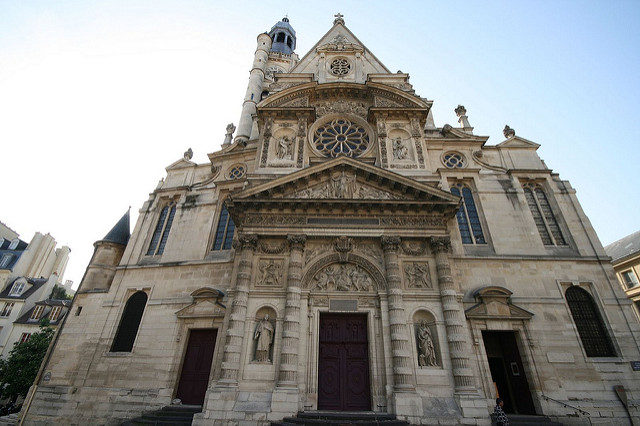
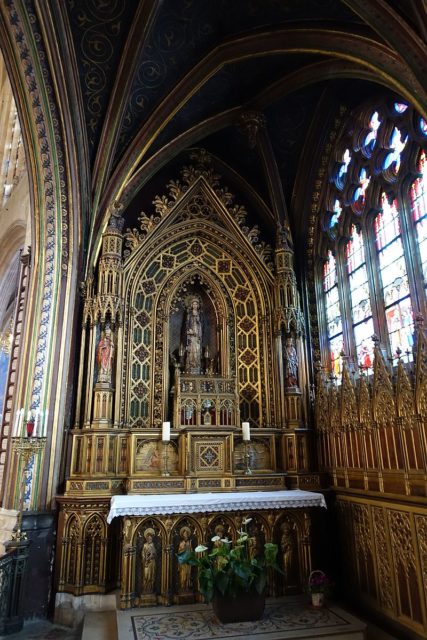
The original building was first erected in 1225 in the abbey of St. Geneviève where she was buried in the 6th century. The place was tiny, and there was not enough space for the faithful. The same year, by the orders of Pope Honorius III, the church was enlarged and devoted to St Etienne who at the time was the patron saint of the cathedral in Paris.
The construction of the new church began in 1492 when the Génovéfain monks donated a part of their land. It was dedicated to St. Geneviève on 25th February 1626 by the first archbishop of Paris, Jean-Francois de Gondi.
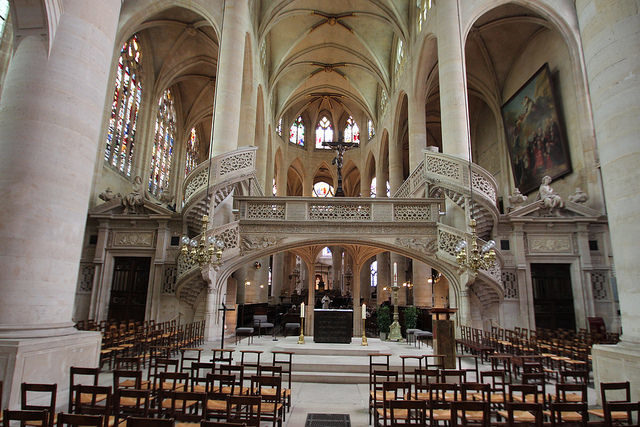
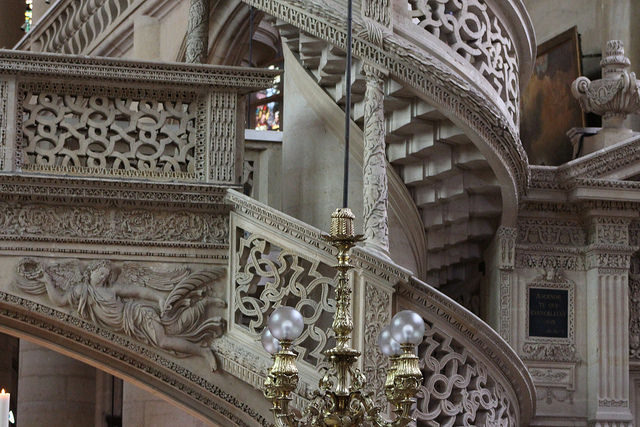
The architecture of the church is a mixture of Renaissance and Gothic style. The apse and the bell tower were sketched in 1494 by the architect Stephen Viguier. The chancel was built in 1537, and the vaults of the nave and the transept were finished in 1580.
In 1610, the first stone of the façade was laid by Marguerite de Valois. The most remarkable part of the church is the rood screen with spiral staircases on either side, and it is the only one which survived in Paris. In 1636, the organ was installed as one of the masterpieces of Pierre Pescheur.
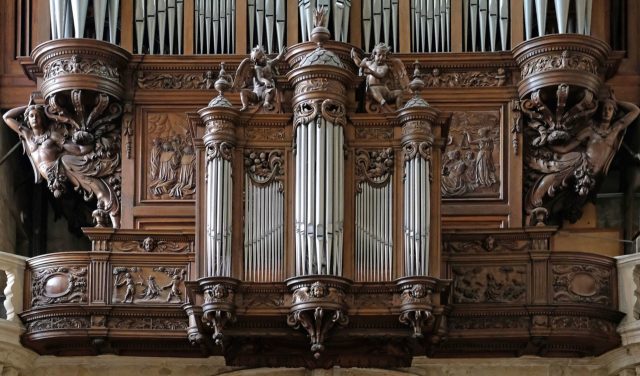
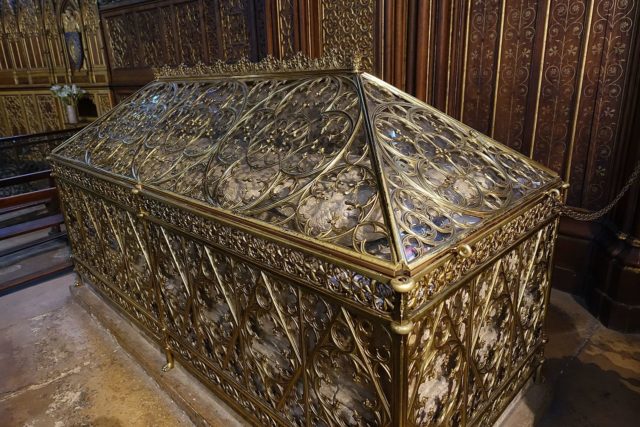
During the 17th and 18th century, the church enjoyed great prestige. It was the most affluent place which attracted pilgrims and visitors from all over the country. Besides the relics of St. Genviève, it also housed the remains of Pierre Perrault, Blaise Pascal, and the painter Eustache Le Sueur. During the French Revolution, the church was turned into a Temple of Filial Piety, and Catholic worship was restored in 1801.
According to Wikipedia, in the 19th century, Bishop Marie-Dominique-Auguste Sibour was assassinated there with cries of “Down with the goddesses!” by the priest Jean-Louis Verger, opposed to the dogma of the Immaculate Conception.
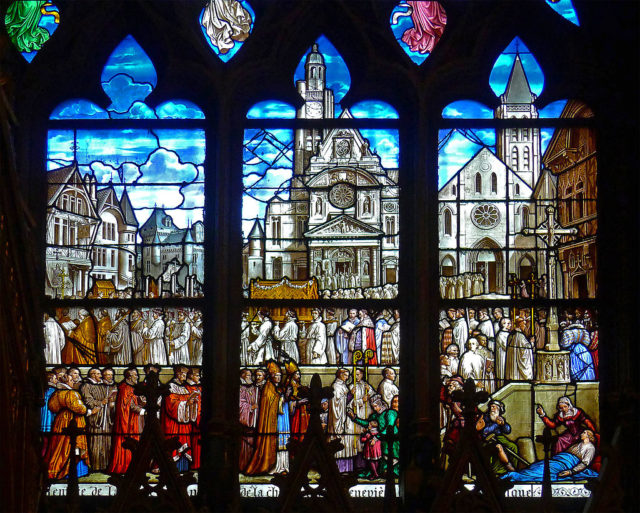
The church was mentioned in the novel A Moveable Feast by Ernest Hemingway. The interiors and exteriors are featured in the movie The Earrings of Madame de… and it is the place where in the movie Midnight in Paris by the director Woody Allen, Owen Wilson’s character is collected by car and transported back to the 1920s.
Today, many people visit the church and concerts are held inside. Saint-Étienne-du-Mont is listed as a historical monument because of its rich history.
